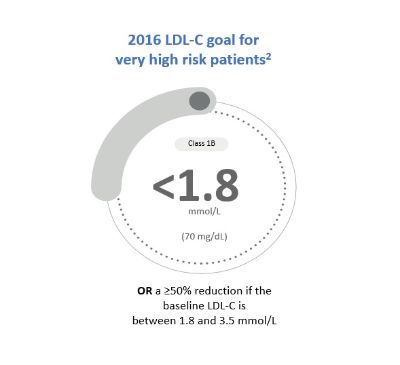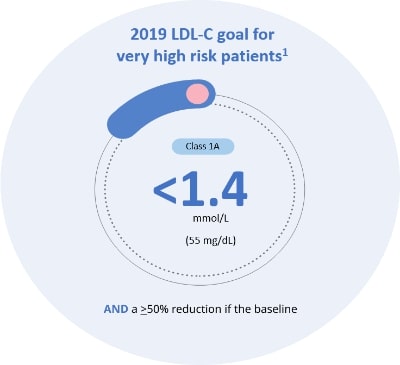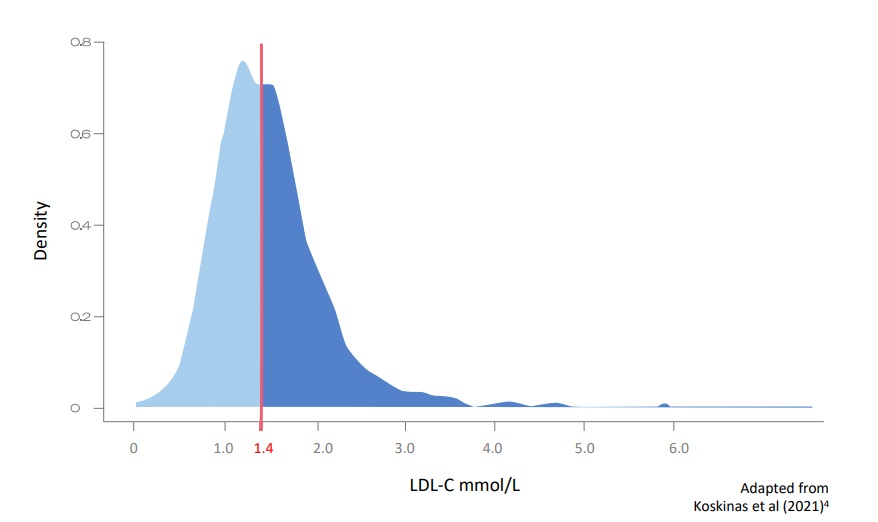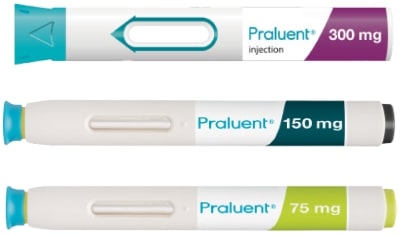- Article
- Source: Campus Sanofi
- 23 Jul 2025
Unmet Needs in Dyslipidaemia


ESC/EAS 2019 guidelines recommend more aggressive treatment to reach LDL-C goals1
The LDL-C goal has been reduced to <1.4mmol/L for patients at very high CV risk in the 2019 ESC/EAS guidelines

%20(1).jpg)

CV = cardiovascular; EAS = European Atherosclerosis Society; ESC = European Society of Cardiology; LDL-C = low-density lipoprotein cholesterol.
Results of the EUROASPIRE V survey - most coronary patients have a less than optimal management of LDL-C 3*
- Only half of the patients (n = 3811) were on high-intensity LLT
(men = 51.3%; women = 46.0%) - The high-intensity LLT related to 72% on atorvastatin 40–80 mg/d, 20% on rosuvastatin
20–40 mg/d and 8% were on combinations of statins with ezetimibe.
*The EUROASPIRE V survey used standardized methods were used by trained technicians to collect information on 7824 patients from 130 centres in 27 countries (including Ireland), from the medical records and at a visit at least 6 months after hospitalization for a coronary event (elective CABG, an elective PCI or an acute coronary syndrome).
CABG = coronary artery bypass graft; LDL-C = low-density lipoprotein cholesterol; LLT = lipid lowering therapy; PCI= percutaneous coronary intervention
ESC/EAS 2019 guidelines recommend more aggressive treatment to reach LDL-C goals1
51% of very high-CV-risk patients would not reach ESC/EAS 2019 Guideline LDL-C goals4
Distribution of LDL-C levels at 1 year*

*At 1-year post-event based on a modelled LDL-C level of 1.4 mmol/L or greater on high-intensity statins and ezetimibe. Patient group contains 2,521 patients hospitalised for an ACS event. The ELIPS study (NCT01075867), a prospective, multicentre, observational cohort study of consecutive ACS patients that aimed to assess the quality of care and adherence to recommended preventive treatments at four academic centres in Switzerland. The analysis included all ACS patients who were enrolled between 1 January 2009 and 31 December 2017, were alive and had available data on LDL-cholesterol values and lipid-lowering therapies 1 year after the index ACS event.
CV = cardiovascular; EAS = European Atherosclerosis Society; ESC = European Society of Cardiology; LDL-C = low-density lipoprotein cholesterol.
Praluent®
Find more information on Indication, Administration and Mechanism of Action and watch videos about Praluent®.

.png)
References
- Mach F, et al. 2019 ESC/EAS Guidelines for the management of dyslipidaemias: lipid modification to reduce cardiovascular risk. Eur Heart J. 2020;41:111–188.
- Catapano AL, et al and the ESC Scientific Document Group. 2016 ESC/EAS Guidelines for the management of dyslipidaemias. Eur Heart J. 2016;37:2999–3058.
- De Backer G, et al. Management of dyslipidaemia in patients with coronary heart disease: Results from the ESC-EORP EUROASPIRE V survey in 27 countries. Atherosclerosis. 2019; 285: 135-146.
- Koskinas KC, et al. Eligibility for PCSK9 inhibitors based on the 2019 ESC/EAS and 2018 ACC/AHA guidelines. Eur J Prev Cardiol. 2021;28:59–65.
MAT-XU-2503027 (v1.0) Date of Preparation: July 2025